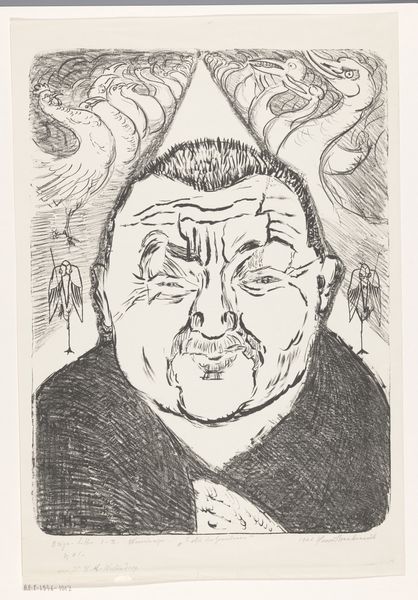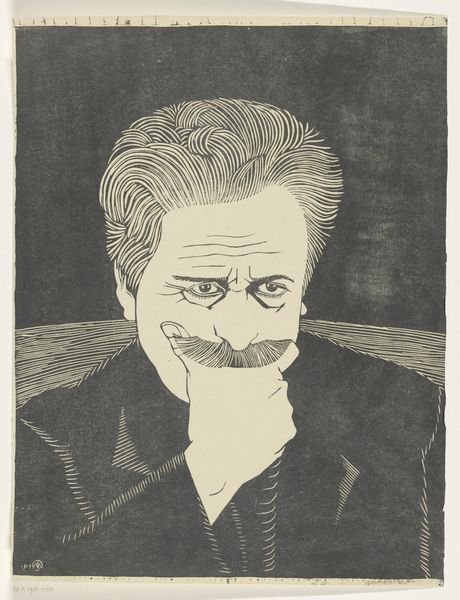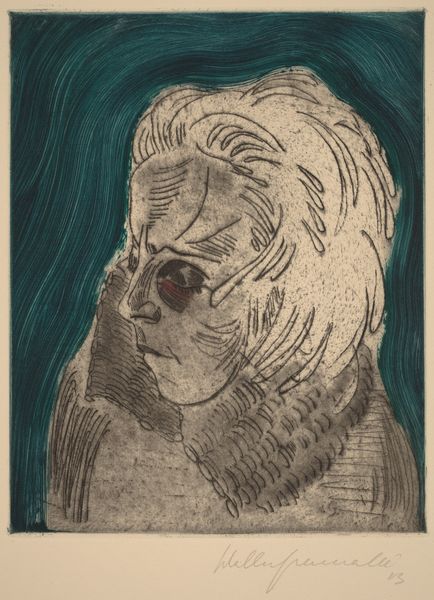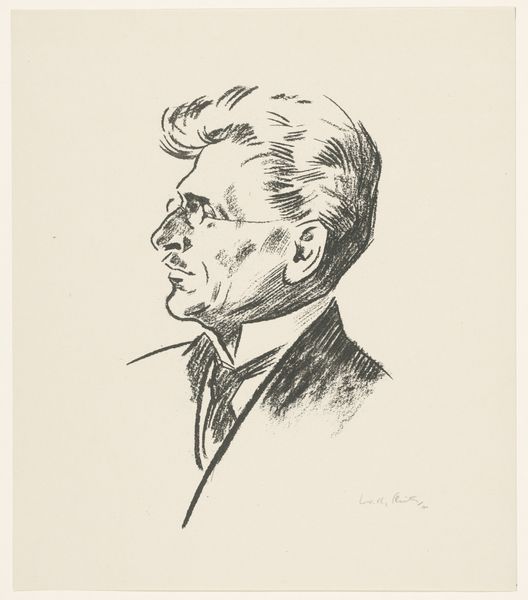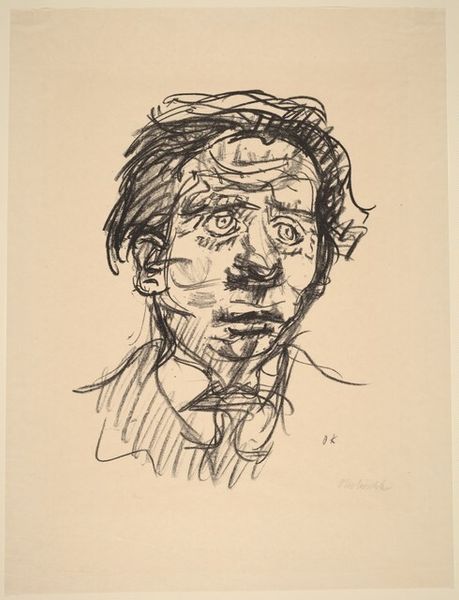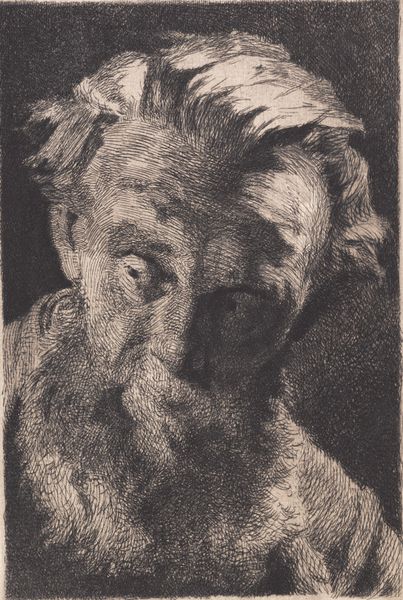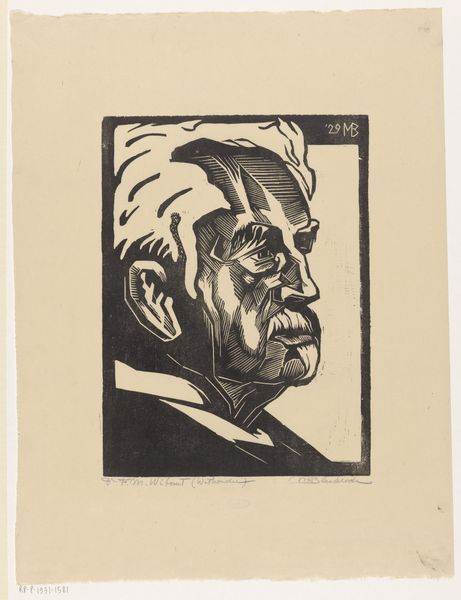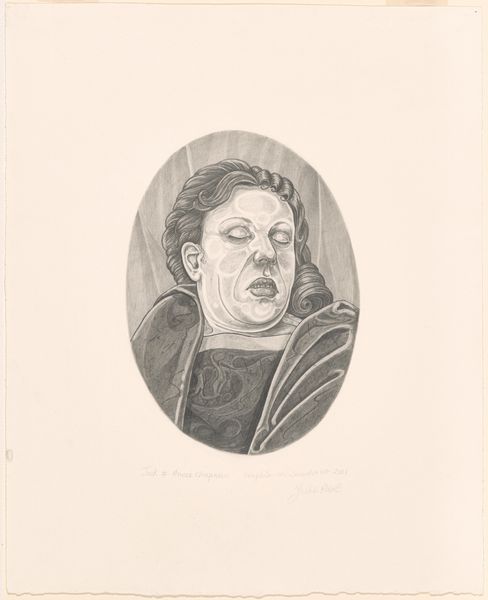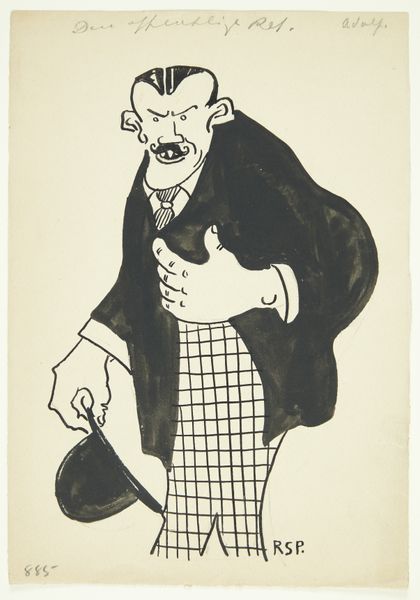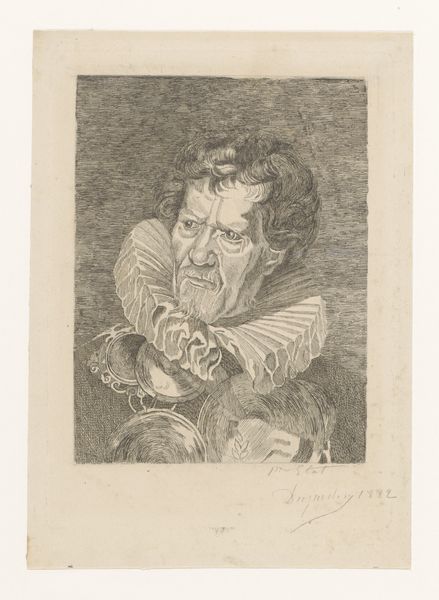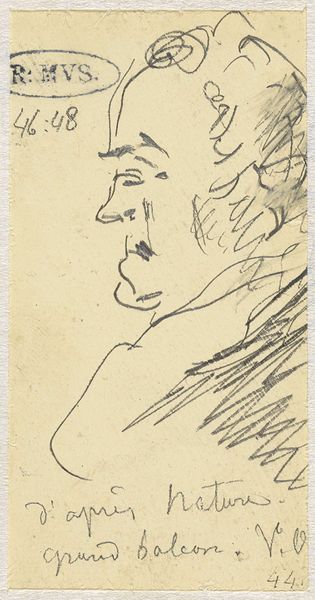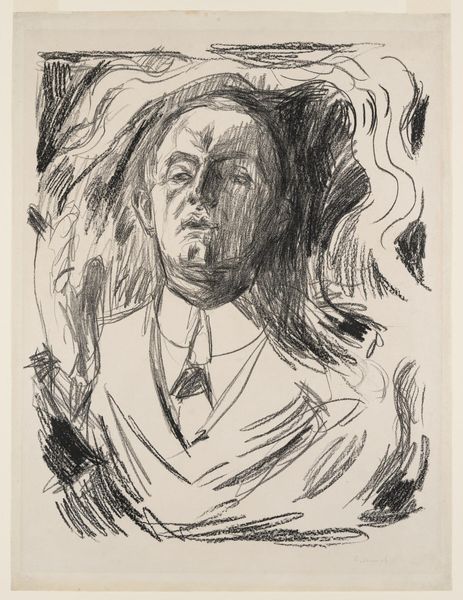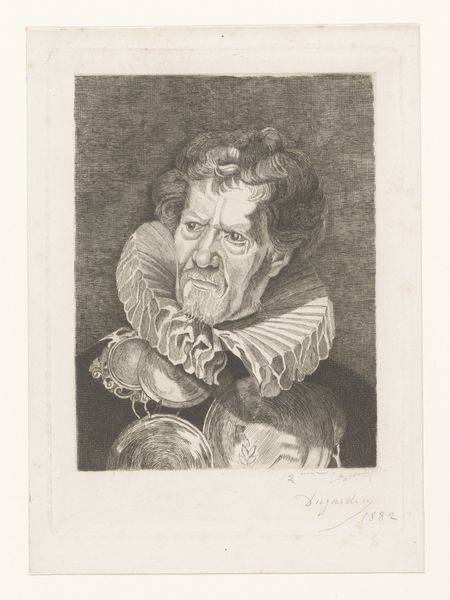
drawing, pen
#
portrait
#
drawing
#
comic strip sketch
#
imaginative character sketch
#
caricature
#
pencil sketch
#
caricature
#
cartoon sketch
#
personal sketchbook
#
pen-ink sketch
#
expressionism
#
sketchbook drawing
#
pen
#
storyboard and sketchbook work
#
sketchbook art
Dimensions: height 200 mm, width 155 mm
Copyright: Rijks Museum: Open Domain
Curator: This spirited drawing, created between 1920 and 1925 by Patricq Kroon, offers us a caricature of A.H. Gerhard rendered with pen and ink. What strikes you immediately about this portrait, Editor? Editor: The exaggerated features and the frenetic linework create a sense of instability and satire. There’s a palpable sense of distortion that I think critiques something about the subject, Gerhard. And look at that meticulously cross-hatched suit—it's the most 'worked' aspect, materially speaking. Curator: Indeed, Kroon uses caricature, a traditionally political tool, to engage with notions of identity and power during the Interwar period. The distorted features of Gerhard become a site where social and political critiques can be articulated. Consider the impact of this choice in a Europe undergoing radical transformations. Editor: It's fascinating to think about Kroon's access to, and manipulation of, materials too. The readily available pen and ink allowed for quick production, implying a kind of immediate commentary. Could we consider it a form of mass communication for the time, intended for circulation among a particular group? Curator: Absolutely, Editor. Think about the networks of artists, writers, and thinkers, the role of the public sphere, the cabarets, the political pamphlets where these sorts of images gained circulation. This image feels connected to larger questions about satire and resistance. We see critiques of class, politics, gender—all articulated through subversive representations of public figures. How does this interplay with social context influence our reception today? Editor: By understanding the accessibility and function of Kroon’s materials—pen, ink, and paper—and locating that process in the context of rapid societal change, the labor inherent to caricature becomes visible, making us consider the means of its production alongside its potentially subversive effect. Curator: Considering Kroon’s caricature in dialogue with contemporaneous theories around propaganda, media representation, and power allows us a more intersectional perspective, where the work becomes something more than just a "funny drawing.” Editor: Precisely. Seeing it as both product and process adds a layer of understanding. Thanks to this, I find this image particularly compelling now. Curator: As do I, it reminds us that these "simple sketches" contain worlds within.
Comments
No comments
Be the first to comment and join the conversation on the ultimate creative platform.
